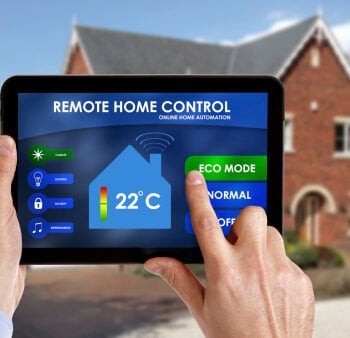
- On February 28, 2017
Updated Nov 21, 2021
To say Phoenix, Arizona is “hot” is like saying rain is wet. If you’ve ever lived here or visited, you know that the “dry heat” argument holds little weight when it’s 115 degrees in the shade. But what might not be so obvious to natives is the fact that Phoenix air conditioning units actually make the city hotter.
Learn the science behind this sweat-inducing Catch-22 and how to cool your home using less energy.
How Air Conditioning Raises Outside Temperatures
The excess heat emitted from the city’s collective air conditioning units actually increases nighttime temperatures as high as 2.7 degrees according to a study conducted by Arizona State University researchers in 2014. With the urbanization of Phoenix came more buildings, roads, and asphalt pavement – all of which can be attributed to the absorption and release of excess heat. When compared to less-developed cities with an abundance of trees and plant life – Phoenix temperatures are considerably hotter. Phoenicians themselves contribute to the heat simply by engaging in daily activities like driving.
Further research shows that the growth of Phoenix as a large urban city has had a quantifiable effect on nighttime temperatures. Low temperatures never exceeded 90 degrees prior to 1970 whereas they emerged 50 times in a nine-year span beginning in 2000. Because of controllable factors from human activity to air conditioning, Phoenix has been referred to as an “urban heat island” due to higher temperatures in comparison to its geographical counterparts.
7 Ways to Reduce the Heat Island Effect
To lower the impact on the troposphere (and your energy bill) there are several practical changes you can implement into your daily life.
1. Bike to Work
Not only will you reduce your carbon footprint, but you’ll also get an awesome workout while saving on car maintenance and fuel costs.
See also: 13 Reasons You Should Bike to Work
2. Run Errands
Literally: Don’t own a bike? Consider a brisk walk or light jog to run errands within a 1-2 mile radius of your home. Yes, it’s hot out, but if your Redbox movie return is just around the corner, is it really worth starting up the car?
3. Install Dark Shades
Keep your home cool and reduce the length of time your air conditioning unit runs by keeping dark, heat-efficient curtains, shutters, or shades are drawn. The same goes for the home’s exterior – install solar screens or window films that reflect heat.
4. Plant a Tree
While they may require future upkeep, large leafy trees around your home’s exterior can prevent scorching rays from shining upon your roof and windows.
5. Time it Right
Adjust the settings on your thermostat to 78 degrees when you’re home and higher when you’re gone or sleeping. Take advantage of automatic settings and you won’t think twice about being energy efficient.
6. Go Old School
If it’s bearable in late spring or early fall, consider using large fans to cool the home. For maximum efficiency, close the windows closest to the fan and open windows in adjacent rooms.
7. Avoid cooking Midday
To keep the house as cool as possible, avoid using the oven and stovetop if possible. Opt for summer-friendly dishes like cold salads and quick no-bake dinners. If you need to cook, use the exhaust fan.
Keep Cool this Summer with Howard Air in Phoenix, AZ
If you must use air conditioning in Phoenix (and trust us – we know you do!), at least make sure to keep up with routine maintenance. Address air conditioning problems as soon as possible to ensure the unit is always operating at maximum efficiency and not expending more energy than is necessary. For all your Phoenix air conditioning repair needs and preventative service requests, contact Howard Air at 623-201-5153.
















0 Comments